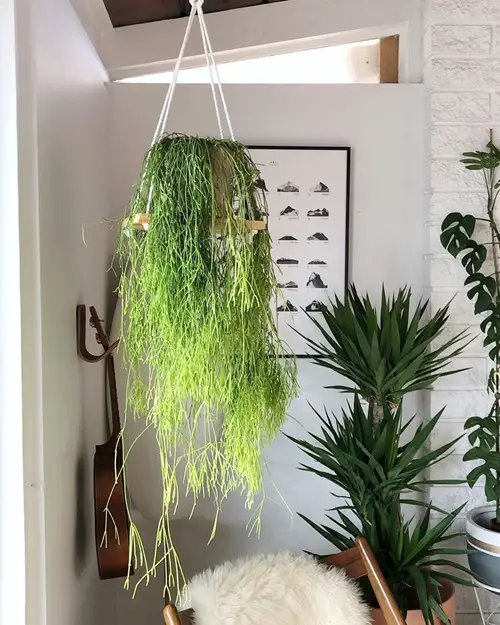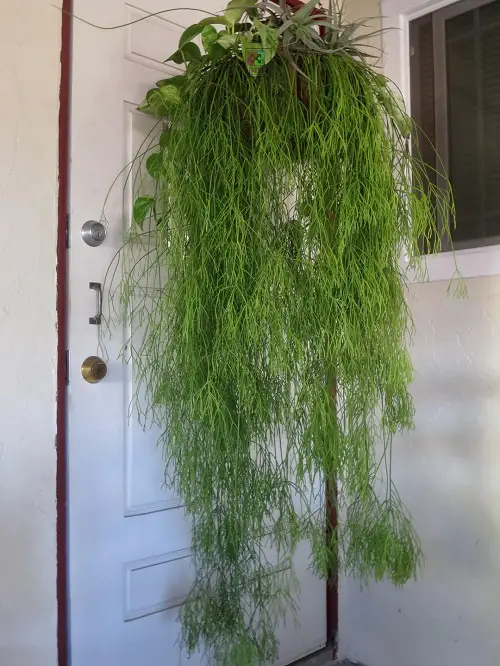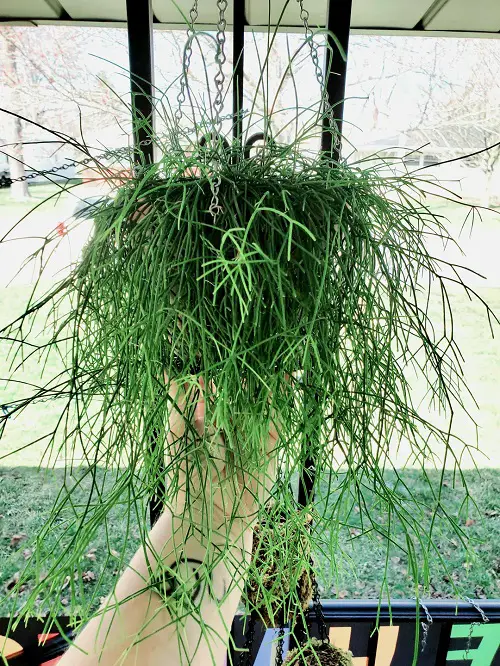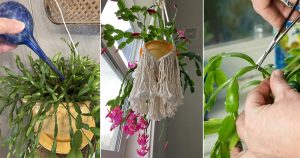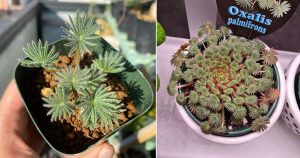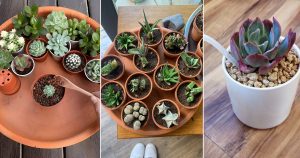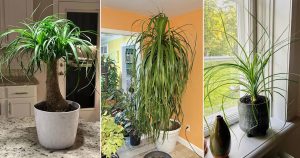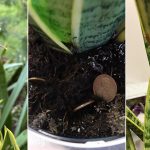Thinking of the easiest hanging cactus to grow indoors? Well, here are the best Rhipsalis plant care tips for you!
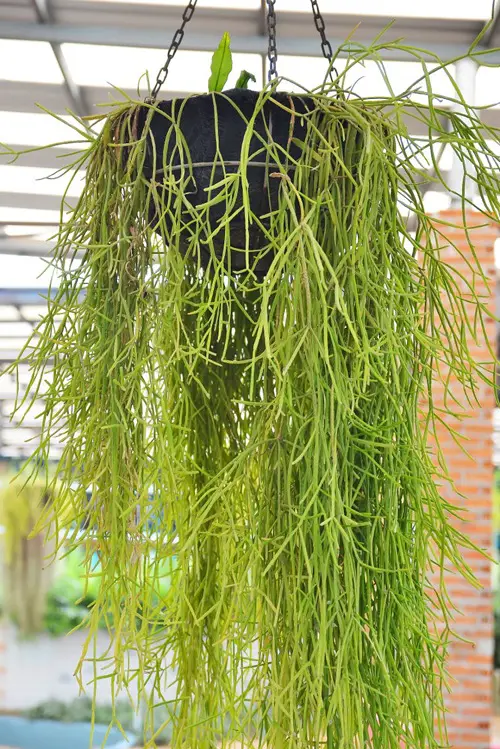
Belonging to the cactus family, Rhipsalis species usually need minimal care, which is why it is great for beginners. However, originating in the rainforests of South America, it does need more watering than a typical, desert cactus. But, this depends on various other factors, too. So, we’ve got the best tips to take care of your Rhipsalis!
Rhipsalis Plant Information
Commonly known as the Mistletoe Cactus, Rhipsalis is a large genus with about 35 to 60 species of cacti! Some grow on trees (epiphytic) and some on rocks (lithophytic), in their natural habitats. Along with narrow, thread-like stems that can sometimes stretch up to 30 feet long, many Rhipsalis varieties produce clusters of showy or tiny flowers in yellow, orange, red, or white that eventually turn into berries.
Note: It is not always possible to create the exact conditions for flowering indoors. However, it will still make for a beautiful trailing houseplant.
Propagating Rhipsalis
Spring and summer are prime times for propagation. Snip 10-15 cm stem segments, and let them callous over for a few days. Then, plant them in a small pot of cactus compost and keep the soil slightly moist. You can place it in bright, indirect light, and within a month, you’ll have a new Rhipsalis taking root!
Dividing plants can often cause trauma and shock. So, ensure that your plant is healthy and has been well-watered the day before dividing it.
Requirements of Growing Rhipsalis
Light and Location
Like many other houseplants, bright, indirect sunlight works best for this plant. You could place it near a north- or west-facing window where it receives an hour or two of the morning or afternoon sun. Avoid harsh, direct sunlight—it’s like kryptonite for those delicate leaves, causing them to scorch.
Proper lighting is key for healthy growth and flower production, so try to give your plant as much indirect light as possible.
Soil
Rhipsalis appreciates a nutrient-rich, well-draining soil that’s slightly acidic but retains some moisture. A cactus soil mix with added free-draining compost works wonders to prevent root rot. You can create an ideal potting blend with four parts shredded orchid bark and two parts each of perlite and sphagnum moss.
Or, if you’re working with regular potting soil, mix 60% soil to 40% perlite for that airy, moisture-balanced blend.
Watering
Watering depends on the location of your Rhipsalis. If you have it in more of a shady spot, you will need to keep the soil somewhat dry. In a more sunny spot, you must water your Rhipsalis thoroughly. Water until you see the excess draining out of the bottom of the pot until the soil feels dry and that is once every three weeks in spring and summer.
Temperature and Humidity
Mistletoe Cacti generally remain happy in moderate indoor temperatures, which range between 59- 75°F or 15- 24°C. They can sometimes tolerate slightly cooler conditions too.
Coming to humidity levels, 40% is the sweet spot for Rhipsalis. If the room of your Rhipsalis is too hot and dry, try raising the clamminess around the plant by putting it on a pebble tray or adding a humidifier about a meter away from it.
Best Rhipsalis Care Tips
Fertilizer
During the growing season, feed your Rhipsalis once a month with a diluted liquid houseplant or cactus fertilizer. And, if you want to encourage blooming then, use a fertilizer higher in potassium, like a liquid tomato feed. Skip feeding in winter, though, as the plant’s growth slows with lower light levels.
Pro tip: Always water your plants before feeding as it helps prevent root burn.
Pruning
Rhipsalis doesn’t need heavy pruning, but if those trailing stems start taking over, trim them back with clean scissors or knife. And, you can keep any stem cuttings for propagation!
Re-potting
Rhipsalis don’t mind being a little pot-bound. But your plant might start growing too big, so it is best to repot it every three years during the spring.
Choose a pot that is only one or a couple of sizes bigger and has adequate drainage holes. After you have properly aligned the root ball into the new pot and firmed up the topsoil, water it thoroughly to help it settle into the new pot. Once you are happy with its growth for about 6 weeks, relax back into your normal feeding and watering schedule
Pro tip: You can use a terracotta pot for better soil aeration and reduced risk of root rot.
Pests and Diseases
Even a hardy plant like Rhipsalis can sometimes get pests, like mealybugs. Such infestations generally occur due to less airflow around the roots and the plant itself. You should also be getting rid of all fallen leaves that may be providing a home to eggs. Organic solutions like ladybirds or spraying the plant occasionally with neem oils also help keep pests like aphids, scales, thrips, and more at bay
Follow these Rhipsalis plant care tips for a wonderful growing journey! Let us know how it goes in the comments below!

